Current Research
Haematological disorders have a high frequency amongst the general population, especially in view of clonal hematopoiesis, which increases with increasing age. Clonal haematopoiesis of indeterminate potential (CHIP) and haematological cancers pose a serious health care problem. Current therapies of the haematological malignancies are frequently not curative due to lack of eradication of leukemic stem cells (LSC), and survival, depending on the cancer and age group, is low. The bone marrow plays a central role in many medical disciplines, as it generates all cellular constituents of our blood and acts as the site of attack for chemotherapy, personalised medicine drugs and cellular therapies. However, exploitation of the bone marrow microenvironment (BMM) as a direct target of innovative therapies is in its infancy, although this holds great promise.
Targeting the bone marrow microenvironment as an adjunct to existing therapies
Significant progress has been made in the treatment of leukaemia. The treatment of chronic myeloid leukaemia (CML), for example, was revolutionized by targeted therapy in the form of imatinib mesylate. However, targeted therapy is not curative and at least 61% of patients relapse when imatinib is discontinued. Rare quiescent leukaemia-initiating cells (LIC) or LSC in CML and acute myeloid leukaemia (AML) appear to be resistant to tyrosine kinase inhibitors (TKIs) and other chemotherapeutic regimen, possibly due to LSC-protective effects by the BMM, leading to disease progression and relapse. Overall, the 5-year survival rate of adults with leukaemia is only 44%, and for adults with AML only 25% will live for 5 years. This warrants the search for novel, adjunct therapies.
The BMM and haematopoiesis
Haematopoietic stem cells (HSC), the normal counterparts to LSC, are situated in an HSC niche in the BMM which consists of osteolineage cells, sinusoidal endothelial cells, mesenchymal stem cells, adipocytes, sympathetic neurons and many others. Other factors determining the (patho-) physiology of the BMM are the oxygen tension, pH, chemical factors, mechanical forces, the extracellular matrix (ECM) and cytokines. These various influences affect the number, location, proliferation, self-renewal, and differentiation of haematopoietic stem and progenitor cells (HSPC) and likely also influence LSC.

The bone marrow microenvironment in leukemia
The decreased adhesive properties of CML cells to BM stroma have been recognised. CD44, a type I transmembrane protein binding to hyaluronan and osteopontin, and selectins and their ligands (Krause DS et al., 2014, Blood) are mediators between LSC and their BMM in AML and CML (Krause DS et al., 2006, Nat. Med.). Modulation of the BMM by parathyroid hormone (PTH), the most potent regulator of bone turnover, led to reduction of LSC in CML via increased BM microenvironmental transforming growth factor (TGF) 1, but not AML, suggesting differential effects of the niche on a leukaemia (Krause DS et al., 2013, Nat. Med.). Additionally, the BMM has been shown to influence the phenotype of a leukaemia.
Current and future work
Traditionally, treatment of the leukaemias has targeted the leukaemia cells themselves, but, as we have shown, pharmacological modification of the BMM can lead to eradication of LSC. Therefore, our laboratory focuses on inhibiting different pathways of communication between leukaemia cells and the bone marrow niche by the use of various leukaemia models and pharmacological agents. Our goal is to test drugs targeting identified pathways in models and to, eventually, initiate clinical trials which will, hopefully, lead to prolongation of survival in leukaemia patients in the future.
Team
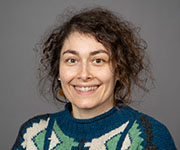
Jimena completed her bachelor's degree in biology at the University of Salamanca (Spain). In her Master's degree in Microbiology, she focused on antibiotic resistance in Mycobacterium tuberculosis. She obtained her PhD at the University of Navarra (Spain), with residency at the University of Pavia (Italy), where she studied the antioxidant and genoprotective properties of coffee byproducts in cancer cells. During her first postdoctoral stay at the University of Chile (Chile), Jimena studied how Helicobacter pylori modulates autophagy in gastric cells. She is working as a postdoc in Prof. Dr. Krause's lab studying the role of immune factors in the bone marrow microenvironment.
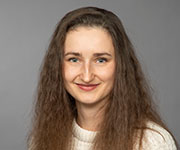
Doctoral Researcher
Alona studied medicine at Bogomolets National Medical University in Kiev (Ukraine) and subsequently completed her residency in internal medicine. Afterwards, she worked as a doctor in the children's hospital "Ohmatdyt" in the blood donation service. Since September 2022 she has been working in the research group of Prof. Dr. Krause as a PhD student. In her PhD thesis she is working on chemical factors in the bone marrow microenvironment in leukaemia.
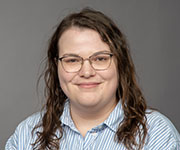
Doctoral Researcher
Alisa completed her bachelor's and master's degrees in chemical biology at the Technical University of Dortmund. She did her bachelor thesis in the field of immunology at the Leibniz Institute for Human Research at the Technical University Dortmund. Her master's thesis at the Institute of Neuropathology at the University Hospital Düsseldorf focused on the role and regulation of 4EBP1 in glioblastoma and neuroblastoma. Now, in her PhD thesis under Prof. Dr. Krause, Alisa is investigating the influence of the bone marrow microenvironment on haematopoiesis and the development of leukaemia.
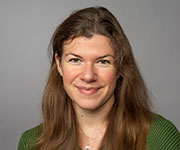
Lab Manager
Theresa completed her bachelor's degree in biochemistry and her master's degree in molecular medicine at Goethe University Frankfurt. She worked at the Paul Ehrlich Institute on research of potential transposases and at the Max Planck Institute for Brain Research on the Connectomics project. After her master thesis, which focused on signal exchange between leukaemia cells and their microenvironment, Theresa started to support several research projects in Prof. Dr. Krause's lab as a lab manager and research associate.

Rahul completed his master's degree in biotechnology at IIT Roorkee (India), and his master's project investigated the inhibition of reactive oxygen species in cancer cells. He did his PhD at the University of Heidelberg under the supervision of Dr. L. Kaufmann (Prof. H. Steinbeisser (late)). During his PhD he studied the involvement of protocadherins (cell adhesion proteins) and downstream kinases in the regulation of Wnt signaling. Currently he is trying to decipher the microanatomy of the leukaemic BMM and its contribution to disease progression.
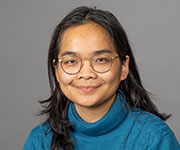
Technical assistant
Hayu completed her bachelor degree in biochemistry at the University of Bayreuth and her master’s degree in molecular medicine at Goethe University Frankfurt. Her master’s thesis focused on the regenerative capacity of mesenchymal stem cells on pulmonary inflammation in Atm-deficient mice at University Hospital Frankfurt. In Prof. Dr. Krause’s lab, Hayu works as technical assistant supporting several research projects, in particular on the role of innovative cancer drugs.




Publications since 2014 (excerpt):
Hoang VT+, Verma D+, Godavarthy PS, Llavona P, Steiner M, Gerlach K, Michels BE, Bohnenberger H, Wachter A, Oellerich T, Müller-Kuller U, Weissenberger E, Voutsinas JM, Oehler VG, Farin HF, Zörnig M*, Krause DS*. *shared last co-authourship
The transcriptional regulator FUBP1 influences disease outcome in murine and human myeloid leukemia.
Leukemia, 2019 Jul;33(7):1700-1712
Verma D, Kumar R, Pereira RS, Karantanou C, Zanetti C, Minciacchi VR, Fulzele K, Kunst K, Hoelper S, Zia-Chahabi S, Jabagi M-J, Emmerich J, Dray-Spira R, Kuhlee F, Hackmann K, Schroeck E, Wenzel P, Müller S, Filmann N, Fontenay M, Divieti-Pajevic P, Krause DS. Vitamin K-antagonism impairs the bone marrow microenvironment and hematopoiesis.
Blood. 2019, 134(3):227-238
Godavarthy PS, Kumar R, Herkt SC, Pereira RS, Hayduk N, Weissenberger ES, Aggoune D, Manavski Y, Lucas T, Pan K-T, Voutsinas JM, Wu Q, Müller MC, Saussele S, Oellerich T, Oehler VG, Lausen J, Krause DS. The vascular bone marrow niche influences outcome in chronic myeloid leukemia via the E-selectin - SCL/TAL1 - CD44 axis. Haematologica. 2020 Jan;105(1):136-147
Verma D*, Zanetti C*, Godavarthy PS*, Kumar R, Minciacchi VR, Pfeiffer J, Metzler M, Lefort S, Maguer-Satta V, Nicolini FE, Burroni B, Fontenay M, Krause DS. Bone marrow niche-derived extracellular matrix-degrading enzymes influence the progression of B-cell acute lymphoblastic leukemia.
Leukemia. 2020 Jun;34(6):1540-1552.
Kumar R, Pereira R, Zanetti C, Minciacchi VR, Merten M, Meister M, Niemann J, Dietz MS, Rüssel N, Schnütgen F, Tamai M, Akahane K, Inukai T, Oellerich T, Kvasnicka HM, Pfeifer H, Nicolini FE, Heilemann M, Van Etten RA, Krause DS. Specific, targetable interactions with the microenvironment influence imatinib-resistant chronic myeloid leukemia.
Leukemia. 2020, 34(8):2087-2101
Feurstein S, Churpek J, Walsh T, Keel S, Hakkarainen M, Schroeder T, Germing U, Geyh S, Heuser M, Thol F, Pohlkamp C, Haferlach T, Gao J, Owen C, Goehring G, Schlegelberger B, Verma D, Krause DS, Gao G, Cronin T, Gulsuner S, Lee M, Pritchard C, Subramanian HP, del Gaudio D, Li Z, Das S, Kilpivaara O, Wartiovaara-Kautto U, Wang E, Griffiths E, Dohner K, Dohner H, King M-C, Godley L. Germline variants drive myelodysplastic syndrome and aplastic anemia in young adults
Leukemia. 2021 Aug;35(8):2439-2444.
Gubas A*, Karantanou C*, Popovic D, Tascher G, Hoffmann ME, Dawe N, Dikic I, Krause DS, McEwan DG. The endolysosomal adaptor PLEKHM1 is a direct target for both mTOR and MAPK pathways.
FEBS Lett. 2021 Apr;595(7):864-880.
Zanetti C, Kumar R, Ender J, Godavarthy PS, Hartmann M, Hey J, Breuer K, Weissenberger ES, Minciacchi V, Karantanou C, Gu Z, Roberts KG, Metzler M, Stock W, Mullighan CG, Bloomfield CD, Filmann N, Bankov K, Hartmann S, Hasserjian RP, Cousins A, Halsey C, Plass C, Lipka DB, Krause DS. The age of the bone marrow microenvironment influences B-cell acute lymphoblastic leukemia progression via CXCR5-CXCL3.
Blood. 2021;138(19):1870-1884
Kumar R, Pereira RS, Niemann J, Azimpour AI, Zanetti C, Karantanou C, Minka W, Minciacchi VR, Kowarz E, Meister M, Godavarthy PS, Maguer-Satta V, Lefort S, Wiercinska E, Bonig H, Marschalek R, Krause DS. The differential role of the lipid raft-associated protein flotillin 2 for progression of myeloid leukemia.
Blood Adv. 2022 Jun 28;6(12):3611-3624.
Karantanou C, Minciacchi VR, Kumar R, Zanetti C, Bravo J, Pereira RS, Tascher G, Tertel T, Covvarubias-Pinto A, Bankov K, Pfeffermann L-M, Bonig H, Divieti-Pajevic P, McEwan DG, Giebel B, Münch C, Dikic I, Krause DS. Impact of mesenchymal stromal cell-derived exosomal cargo on B-cell acute lymphoblastic leukemia progression.
Blood Adv. 2023 Apr 11;7(7):1190-1203.
Méndez-Ferrer S, Bonnet D, Steensma DP, Hasserjian RP, Ghobrial IM, Gribben JG, Andreeff M, Krause DS. Bone marrow niches in haematological malignancies.
Nat Rev Cancer, 2020, May;20(5):285-298.
Pereira RS, Kumar R, Cais A, Paulini L, Kahler A, Bravo J, Minciacchi VR, Krack T, Kowarz E, Zanetti C, Godavarthy PS, Hoeller F, Llavona P, Stark T, Tascher G, Nowak D, Meduri E, Huntly BJP, Münch C, Pampaloni F, Marschalek R, Krause DS. Distinct and targetable role of calcium sensing receptor in leukaemia
Nat Commun. 2023 Oct 6;14(1):6242.


 International Medical Services
International Medical Services


